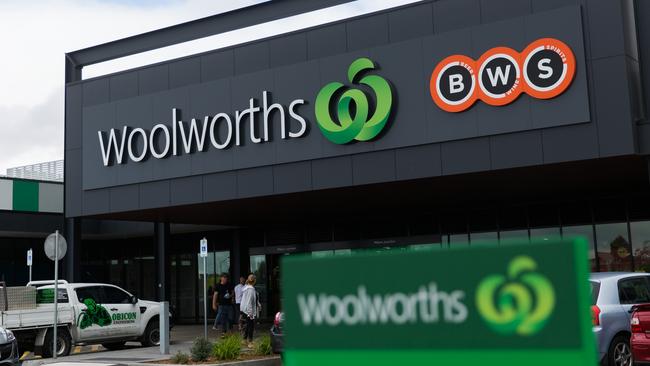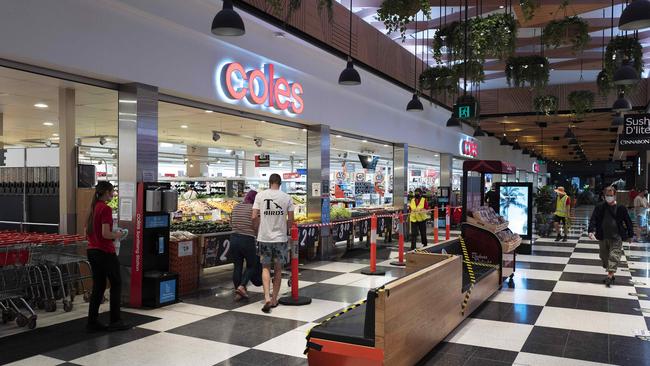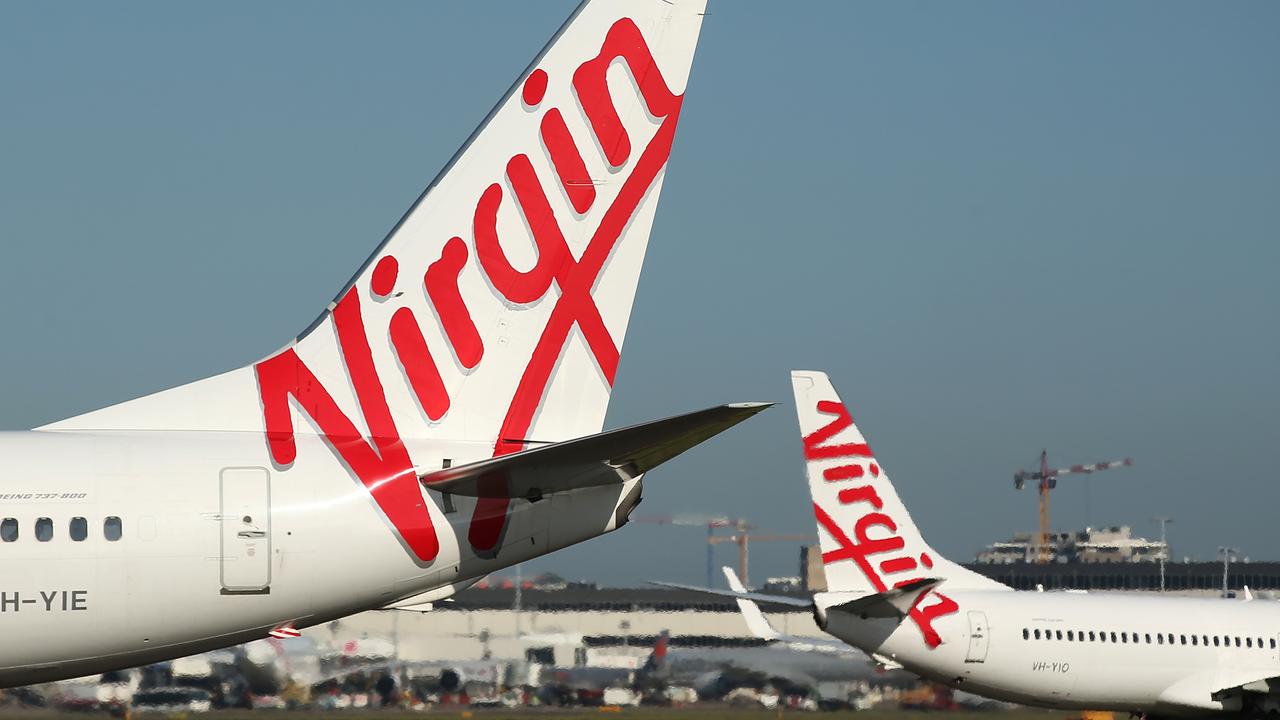JPMorgan: Coles ’several years’ behind Woolworths in online business
Coles is set to lose market share to its major rival Woolworths unless it invests in its online offering, analysts at JPMorgan say.

Business
Don't miss out on the headlines from Business. Followed categories will be added to My News.
Woolworths will increase its share of the supermarket sector at the expense of fierce rival Coles, according to JPMorgan, unless Coles slashes its “high” dividend payout ratio and ramps up its investment in online ordering and home delivery.
Following a period of coverage restriction, on Wednesday JPMorgan Australian consumer sector analyst Shaun Cousins reinstated coverage of Woolworths with a buy rating while maintaining neutral Coles.
In an investor note Mr Cousins said Woolworths had benefited from recent major events like COVID-19, the black summer bushfires and the drought breaking largely due to the location and higher quantity of its stores.
“The Woolworths store network is larger and has a greater skew to neighbourhood stores vs. Coles, which has a greater skew to shopping centres,” Mr Cousins said, adding that Woolworths noted at its last half-yearly results that shopping centre locations “continued to endure a lower rate of sales growth vs. neighbourhood stores”.
ABS statistics show that Woolworths averaged like-for-like sales growth of 7.1 per cent in the last quarter of 2020, against the 5.2 per cent achieved by Coles.
Alongside its physical store advantage, Mr Cousins noted that Woolworths is “several years ahead of Coles” in the development its increasingly important online food business, with Coles’ $150m deal with UK grocery distribution disrupter Ocado still two years away from producing two highly automated customer fulfilment centres.
“Basic infrastructure is not yet complete for Coles,” he said.
“Indications that its app and website cannot communicate suggest rudimentary work is required.
“The Ocado launch in the 2023 financial year is key for Coles yet it needs to invest in remedial action now to improve its offer while Woolworths is gaining share during the ‘land-grab’ phase of online in food retail.”

By contrast, Woolworths is pursuing a more decentralised network of dark stores and micro-fulfilment centres that are higher cost but “of greater proximity to the customer and a focus on click & collect”.
Mr Cousins said one solution could be for Coles to slash its dividend ratio, which was 78.43 per cent at the end of the last financial year.
“Coles could accelerate online investment at the expense of its high dividend payout ratio yet this is unlikely, making ongoing market share losses more likely,” he said.
“A lower dividend payout ratio could realise approximately $100m to 500m depending on how low a dividend payout ratio is assumed.”
Mr Cousins said that Woolworths would also benefit from the improving performances of its non-core businesses like big box retailer Big W, as well as the pending demerger or float of its Endeavour drinks and hotels business.
“Big W has undergone a significant turnaround. This follows a period in the mid 2010s of significant management turnover, especially 2014-2016, and poor execution which resulted in market share gains by Kmart at the expense of Big W and others,” he said.
“The separation of Endeavour Group is a key part of, but also a continuation of, the unwinding of the Woolworths retail conglomerate that peaked in the late 2000s and early 2010s.”
JPMorgan downgraded its Coles target price from $18 to $16.50, and set a new target price of $45 for Woolworths.
Coles shares closed at $15.77 on Wednesday, down 0.76 per cent, while Woolworths closed at $41.34, up 0.8 per cent.
Originally published as JPMorgan: Coles ’several years’ behind Woolworths in online business





